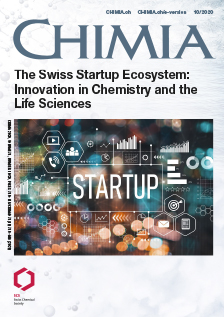TOP-N53: A Clinical Drug Candidate for the Treatment of Non-healing Wounds
DOI:
https://doi.org/10.2533/chimia.2020.814PMID:
33115566Keywords:
Diabetic foot ulcer, Digital ulcer, Microcirculation, Nitric oxide, Phosphodiesterase-5, Pressure ulcer, Regenerative medicine, Soluble guanylate cyclase, Top-n53, Top-52, Wound healingAbstract
Chronic non-healing wounds impose a huge burden on patients and health care providers. In spite of improvements in standards of care there are no effective and safe treatments that promote new tissue formation and wound closure in ailments such as diabetic foot ulcer, pressure ulcer, venous leg ulcer or digital ulcer in systemic sclerosis. Endothelial dysfunction, which associates with impaired endogenous nitric oxide formation is assumed to be a main disease mechanism in chronic, non-healing wounds in diabetic and elderly patients as well as in digital ulcers in systemic sclerosis. Topadur Pharma has invented small molecular weight nitric oxide-releasing PDE5 inhibitors, which by modulating a key enzyme system of intracellular signaling may address chronic non-healing wounds. The promising first drug candidate TOP-N53 is currently in early clinical development. Here we describe for the first time the design of TOP-N53 and the synthesis of the clinical GMP batch.Downloads
Published
2020-10-28
Issue
Section
Scientific Articles
License
Copyright (c) 2020 Reto Naef, Hermann Tenor, Guido Koch

This work is licensed under a Creative Commons Attribution-NonCommercial 4.0 International License.
How to Cite
[1]
R. Naef, H. Tenor, G. Koch, Chimia 2020, 74, 814, DOI: 10.2533/chimia.2020.814.







